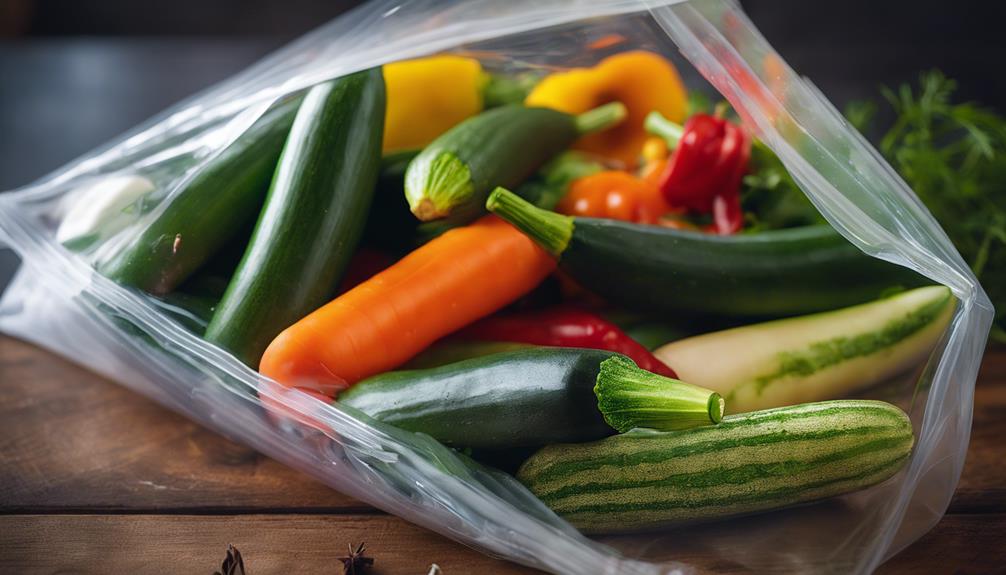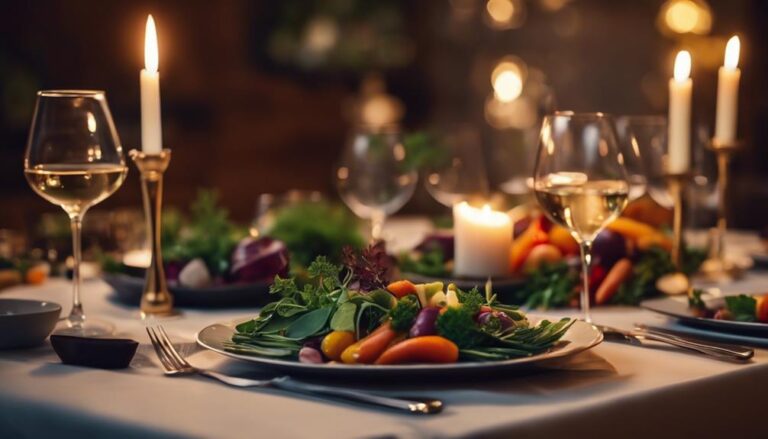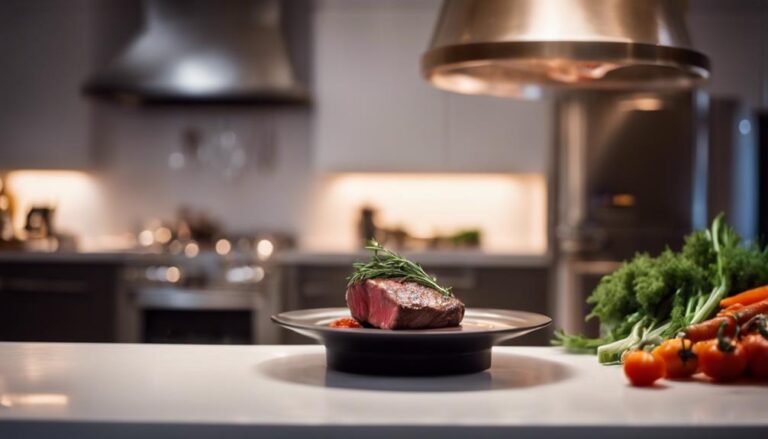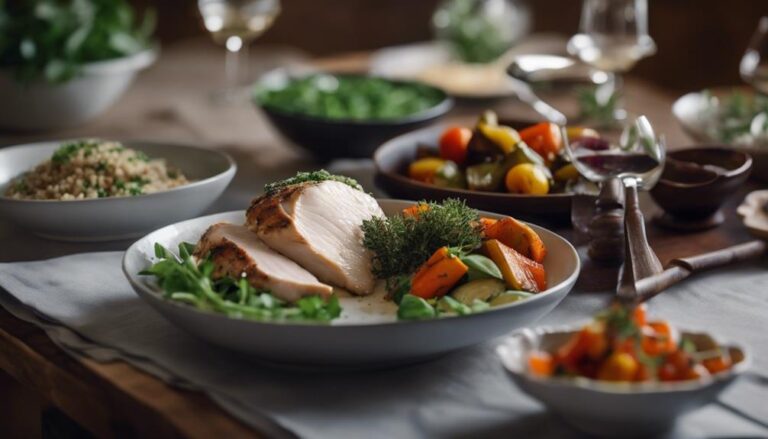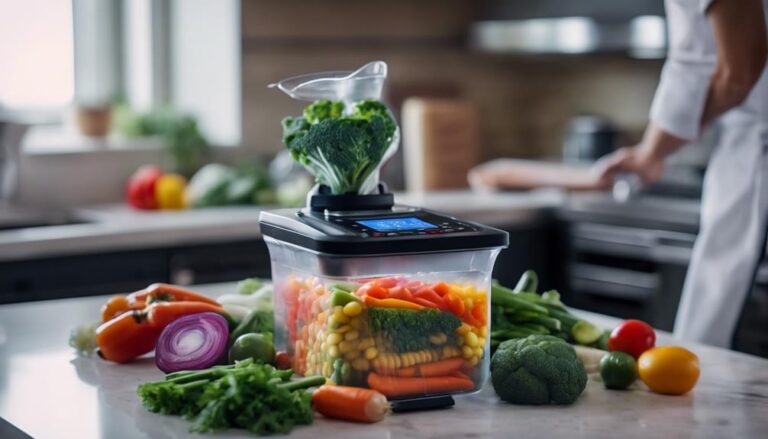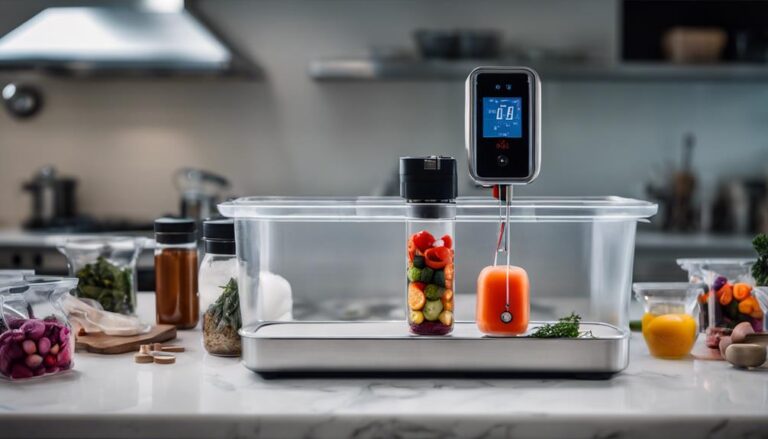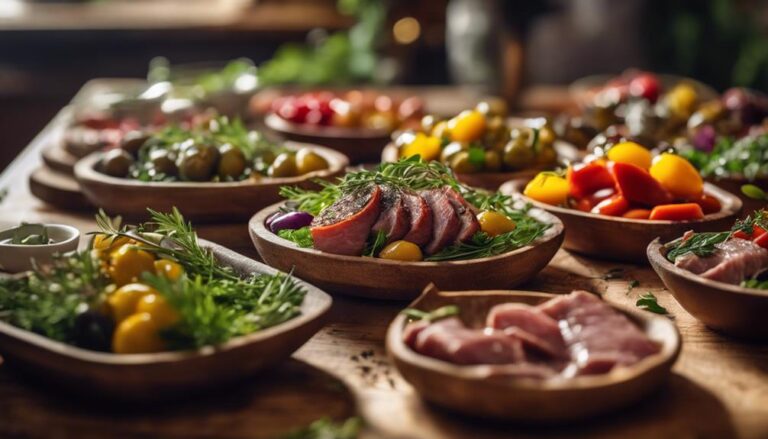The Best Vegetables for Sous Vide Cooking and Weight Loss
If you're looking to lose weight, sous vide cooking is a smart choice for preparing vegetables. Ideal options include low-calorie, high-fiber choices like carrots, broccoli, spinach, and asparagus. Cooking these vegetables at 183°F to 185°F preserves their nutrients and enhances flavors without added fats. Carrots take about one hour, while asparagus cooks quickly in just 15 minutes. By vacuum sealing your vegetables with herbs or spices before cooking, you'll maximize flavor without extra calories. This cooking method not only helps with meal prep but also elevates the taste of simple vegetables, making healthy eating more enjoyable. There's more to explore about optimizing your sous vide experience.
What You Will Learn Here
- Sous vide cooking preserves nutrients and enhances flavors, making it ideal for low-calorie vegetable dishes.
- Recommended vegetables for weight loss include carrots, broccoli, spinach, kale, and asparagus due to their high fiber and low-calorie content.
- Cooking vegetables at 183°F to 185°F for specific times ensures optimal flavor and nutrient retention.
- Seasoning vegetables before sous vide cooking enhances their natural flavors without adding calories.
Benefits of Sous Vide Cooking
Sous vide cooking offers precise temperature control, ensuring your vegetables retain their nutrients and flavors while preventing overcooking. This method allows you to create perfectly cooked low-calorie vegetable dishes that are both satisfying and healthy. When you cook vegetables at lower temperatures, around 183°F, you preserve their cell structure and water content, resulting in tender yet firm textures that make meals more enjoyable.
Using vacuum-sealed bags not only prevents nutrient loss but also enhances flavor infusion from any herbs and spices you choose to add. This promotes healthier eating habits, which can help you and your guests stay on track with weight management goals. Since sous vide methods require minimal added fats or oils, you can easily prepare delicious, low-calorie vegetable dishes without sacrificing taste.
Additionally, the ability to prepare multiple servings of vegetables at once makes meal prep easier. This encourages consistent consumption of healthy foods, an essential factor for successful weight loss. With sous vide cooking, you can serve nutritious and flavorful meals that will impress your family and friends while supporting their health goals.
Ideal Vegetables for Weight Loss
Incorporating vegetables like carrots, broccoli, and spinach into your diet can greatly aid your weight loss efforts due to their low calorie content and high fiber levels. These sous vide vegetables not only keep you full but also help reduce overall calorie intake. By cooking them with the sous vide method, you guarantee that their nutrients and flavors remain intact, without adding any extra calories from oils or fats.
Nutrient-dense vegetables like kale and asparagus can further enhance your weight loss journey, providing essential vitamins and minerals. When you prepare these vegetables sous vide, you can infuse them with herbs and spices, enhancing their taste while keeping them healthy. For instance, zucchini and bell peppers become vibrant, flavorful dishes that you and your guests will enjoy.
Additionally, the sous vide technique maintains the crisp texture of vegetables, making it easier for you to include these low-calorie foods in your meals. By serving these nutritious options, you not only promote your weight loss efforts but also encourage others to appreciate the benefits of a balanced diet rich in vegetables.
Time and Temperature Guidelines
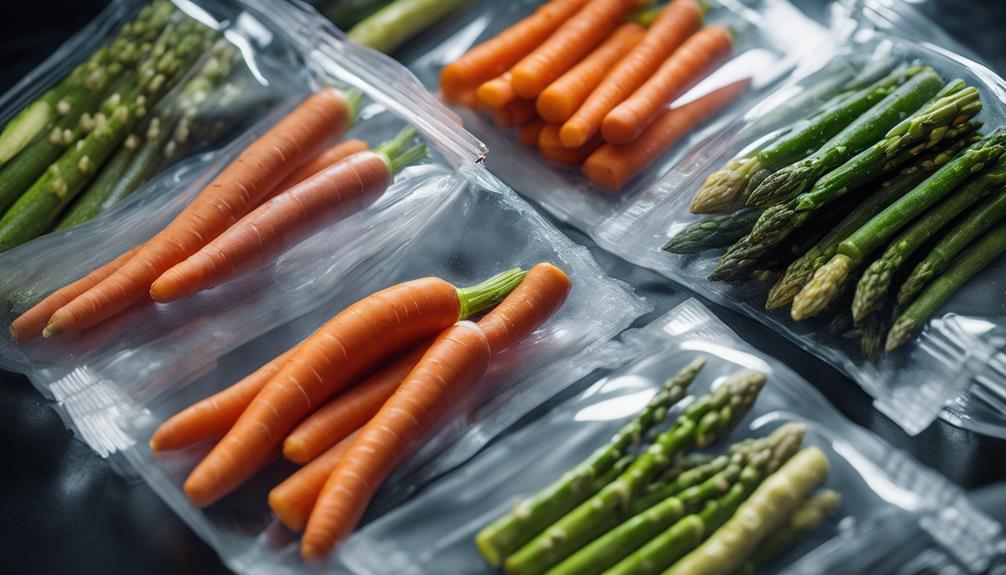
Understanding the right time and temperature for sous vide cooking can elevate your vegetable dishes, guaranteeing they remain flavorful and nutrient-rich while achieving the desired texture. When you're preparing sous vide recipes, maintaining a consistent temperature is essential for achieving fully cooked vegetables.
Here's a quick guide to help you navigate the ideal time and temperature for various veggies:
| Vegetable | Cooking Time at 183°F (84°C) |
|---|---|
| Carrots | 1 hour |
| Broccoli | 30 minutes |
| Cauliflower | 1 hour |
| Asparagus | 15 minutes |
| Zucchini | 45 minutes |
Cooking vegetables at 183°F (84°C) allows you to break down pectin and starch effectively, resulting in tender yet structured dishes. Remember, longer cooking times will yield softer textures, so you can customize according to your preference. Always guarantee you maintain the water bath temperature, as this is vital for retaining flavor and nutrients while reaching your desired tenderness. By following these time and temperature guidelines, you'll create delicious, nutritious vegetable dishes that impress your guests.
Cooking Techniques for Vegetables
Experimenting with various cooking techniques can elevate the flavors and textures of your sous vide vegetables, ensuring they shine on your plate. To make the most of your sous vide cooking experience, consider these effective methods:
- Temperature Control: Cook your sous vide carrots and other vegetables at precise temperatures, typically between 183°F and 185°F, to achieve ideal tenderness without sacrificing nutrients.
- Sealing: Use vacuum-sealed bags to lock in moisture and flavors. This technique allows your vegetables to cook in their own juices, enhancing their natural taste.
- Timing: Be mindful of cooking times. For instance, sous vide carrots require about 1 hour to become tender yet firm, while other vegetables may need different durations.
- Post-Cooking Techniques: After cooking, glaze your vegetables in a skillet with butter or oil to enhance their appearance and flavor, making them more appealing for serving.
Nutritional Advantages of Sous Vide
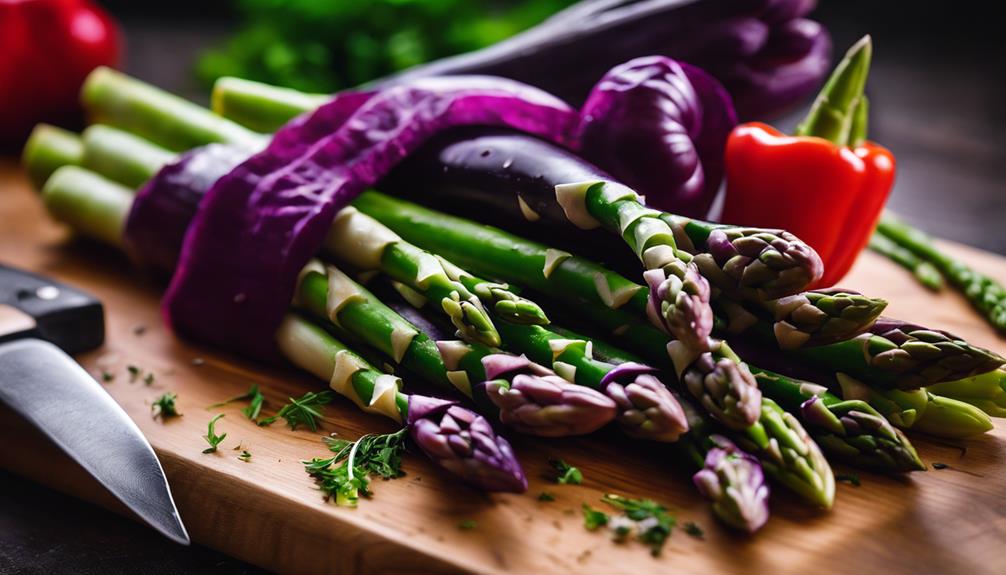
Sous vide cooking preserves the nutrients in vegetables by using lower temperatures, which minimizes nutrient loss compared to traditional high-heat methods. When you cook vegetables at around 183°F (84°C), it allows pectin to break down without compromising their structure. This results in tender, nutrient-rich produce that's perfect for serving others.
One of the essential sous vide advantages is its ability to retain vitamins, minerals, and antioxidants through the vacuum-sealed cooking process. This enhanced nutritional profile means you can offer your family and friends vibrant, healthy dishes. Additionally, cooking sous vide can help keep the calorie content low. By avoiding the common practice of adding fats or oils, you guarantee your meals are healthier while still being delicious.
You can also infuse your sous vide vegetables with a variety of herbs and spices, creating a low-calorie way to elevate flavors. This method not only makes your cooking healthier but also more enjoyable. By choosing sous vide for your vegetable preparation, you're giving your loved ones meals that are both flavorful and packed with nutrients, making it a fantastic choice for any health-conscious cook.
Recipes for Sous Vide Vegetables
When you want to elevate your vegetable dishes, sous vide cooking offers a range of delicious recipes that enhance flavors while keeping them nutritious.
Cooking sous vide vegetables allows them to retain their natural taste and nutrients, making them perfect for weight loss.
Here are four simple recipes to try:
- Sous Vide Carrots: Peel and slice carrots, then vacuum-seal with a teaspoon of butter and a pinch of salt. Cook at 183°F (84°C) for 1 hour. They'll be tender and flavorful.
- Crispy Asparagus: Trim the ends of asparagus and seal with a drizzle of olive oil and lemon zest. Cook at 183°F (84°C) for 12 minutes to maintain their crunch.
- Herbed Beets: Wrap whole beets in foil with thyme and a splash of balsamic vinegar. Cook at 183°F (84°C) for 2 hours. After cooking, peel and slice for a colorful addition to any plate.
- Garlic Green Beans: Seal green beans with minced garlic and a bit of salt. Cook at 183°F (84°C) for 30 minutes for a vibrant, flavorful side dish.
These recipes will impress your guests while supporting your weight loss goals.
Enhancing Flavor With Seasoning
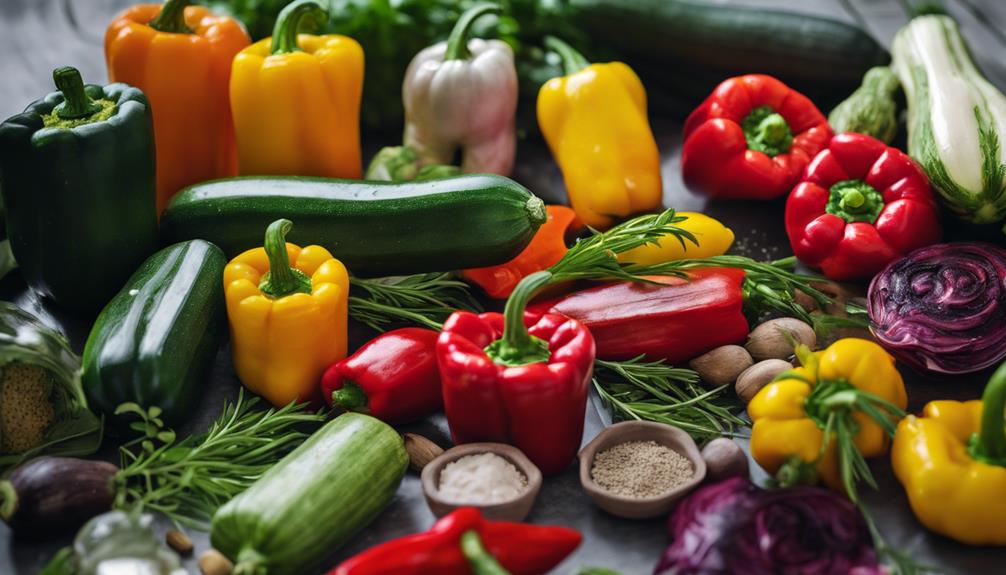
Enhancing the flavor of your sous vide vegetables is key to transforming simple ingredients into gourmet dishes, and the right seasonings can make all the difference.
When you season vegetables before sous vide cooking, you allow their natural flavors to shine while infusing them with herbs and spices. For instance, pairing garlic, rosemary, or lemon with carrots and asparagus can elevate their taste and make them more appealing to your guests.
The sous vide method offers precise control over cooking temperatures, which helps maintain the integrity of your seasonings. Unlike traditional cooking methods, you'll prevent the loss of flavors. Incorporating fats, like olive oil or butter, into the vacuum bag along with your seasonings not only enhances flavor absorption but also gives your vegetables a rich, glossy finish once cooked.
Don't be afraid to experiment with different seasoning combinations during your sous vide cooking. This approach can lead to unique flavor profiles, allowing you to discover exciting new ways to serve vegetables that will impress those around your table.
With a little creativity, you can turn ordinary vegetables into memorable culinary experiences.
Simultaneous Cooking With Meat
Cooking vegetables alongside meat in a sous vide setup allows you to achieve perfectly tender results while keeping flavors intact. When you're cooking sous vide, it's important to manage temperatures and timing effectively to guarantee both components shine on the plate. Here are some tips for simultaneous cooking:
- Temperature Management: Cook vegetables like sous vide asparagus at around 183°F, while most meats require lower temperatures for tenderness.
- Timing is Key: Prepare denser vegetables, such as carrots, ahead of time. Reheat them just before serving to maintain ideal texture and flavor.
- Add at the Right Moment: For quicker-cooking options, like asparagus and peas, add them to the sous vide bag with the meat during the last 30 minutes of cooking.
- Separate Vacuum Sealing: For the best flavor retention, vacuum-seal vegetables separately from the meat. Combine them on the plate after cooking for an appealing presentation.
Meal Prep Tips for Vegetables
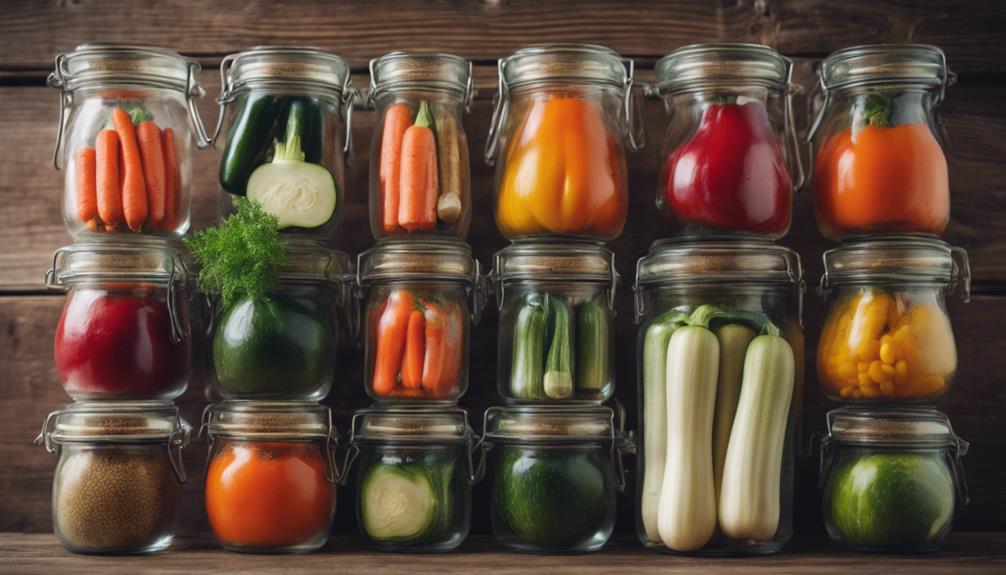
Meal prepping vegetables for sous vide can simplify your weeknight dinners, ensuring you always have nutritious options on hand.
Start by selecting nutrient-rich vegetables like carrots, broccoli, and beets. Cooking these at 183°F helps retain their flavors and promotes weight loss.
Vacuum-sealing your vegetables before sous vide cooking preserves their nutrients while allowing flavors from herbs and spices to infuse, enhancing taste without added calories.
Plan to cook larger batches at once. Sous vide makes it easy to store prepped vegetables in the refrigerator or freezer, so you have healthy meal options ready throughout the week.
For the best results, season your vegetables with minimal oil or fat, as this cooking method requires little to no added fats—making it a healthier choice for meal prep.
Don't hesitate to explore a variety of vegetables, such as small turnips, radishes, and parsnips. This variety not only keeps your meals interesting but also maximizes nutrition.
Frequently Asked Questions
What Is the Best Vegetable to Sous Vide?
When you sous vide vegetables, carrots stand out for their perfect texture and flavor enhancement. You'll appreciate how this method retains nutrients, allowing you to serve delicious, healthy dishes that impress everyone at the table.
Are Sous Vide Vegetables Healthier?
Yes, sous vide vegetables are healthier. You'll enjoy superior nutrient retention and flavor enhancement through this cooking technique, allowing you to serve vibrant, delicious dishes that maximize both taste and nutritional benefits for your guests.
What Are the Disadvantages of Sous Vide Cooking?
Sous vide cooking has drawbacks, like high equipment costs and potential cooking safety issues if temperatures aren't managed properly. Plus, it can lack that rich flavor you want when serving others, due to minimal caramelization.
What Is the Best Thing to Make in a Sous Vide?
When you explore sous vide techniques, you'll find that meats, eggs, and seafood shine. With precise cooking times and flavor infusion, you'll serve dishes that amaze your guests while preserving moisture and enhancing taste.
Conclusion
Incorporating sous vide cooking into your routine can greatly enhance your vegetable dishes while supporting your weight loss goals.
By selecting the right vegetables, following time and temperature guidelines, and using effective cooking techniques, you can enjoy flavorful and nutritious meals.
Remember to experiment with seasonings and consider cooking vegetables alongside meats for a complete meal.
With the right approach, sous vide can transform your cooking experience and provide numerous health benefits.
